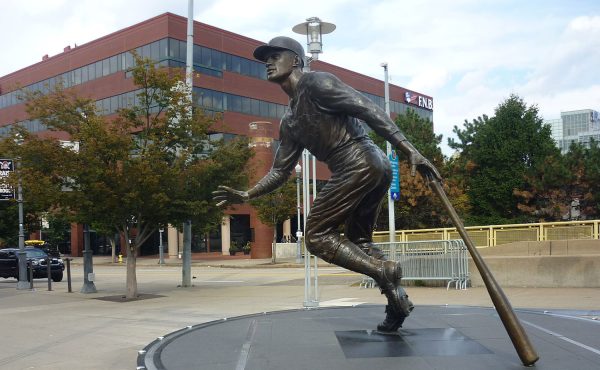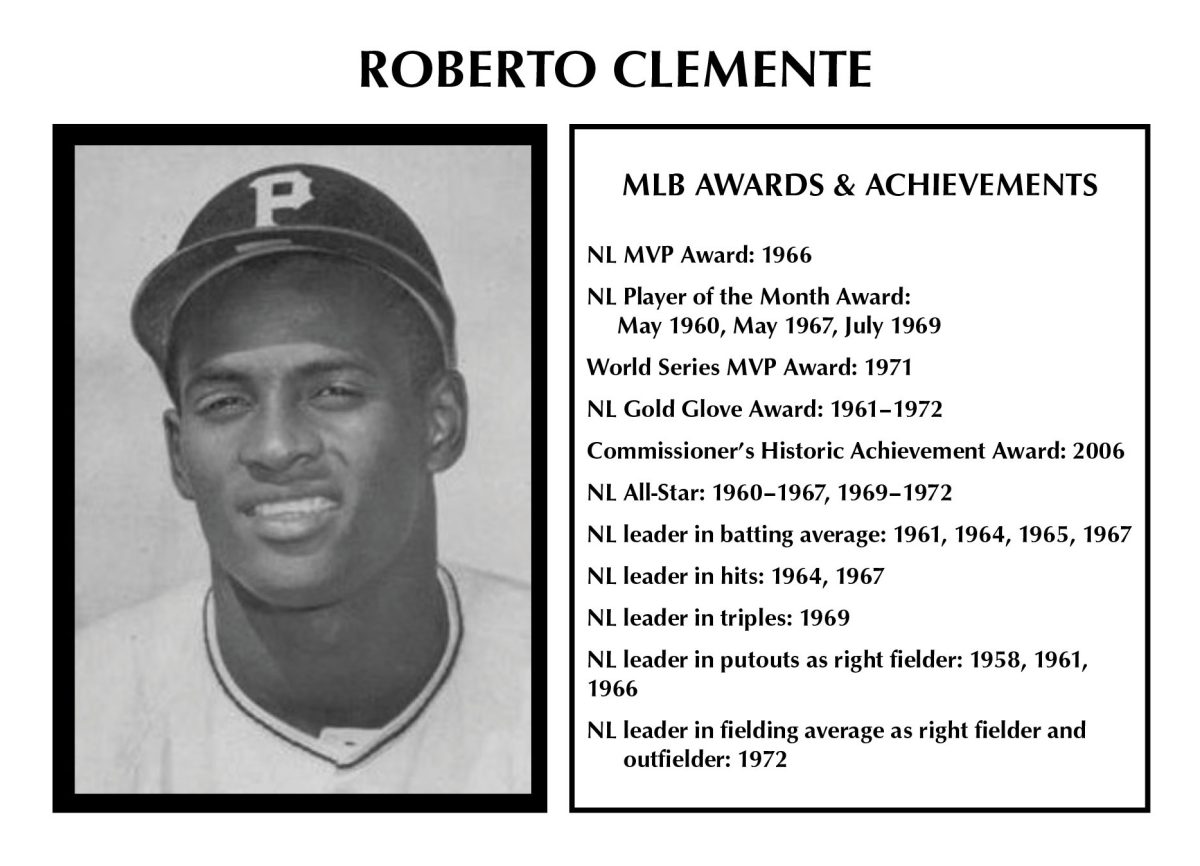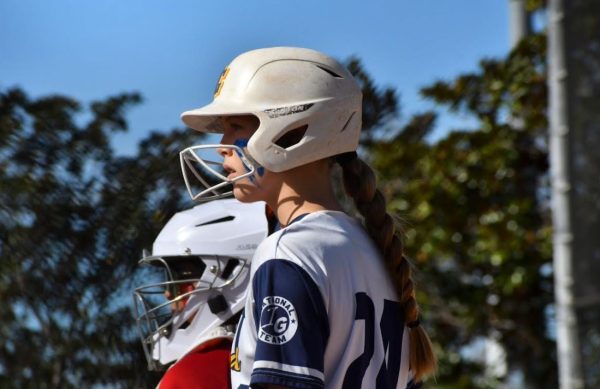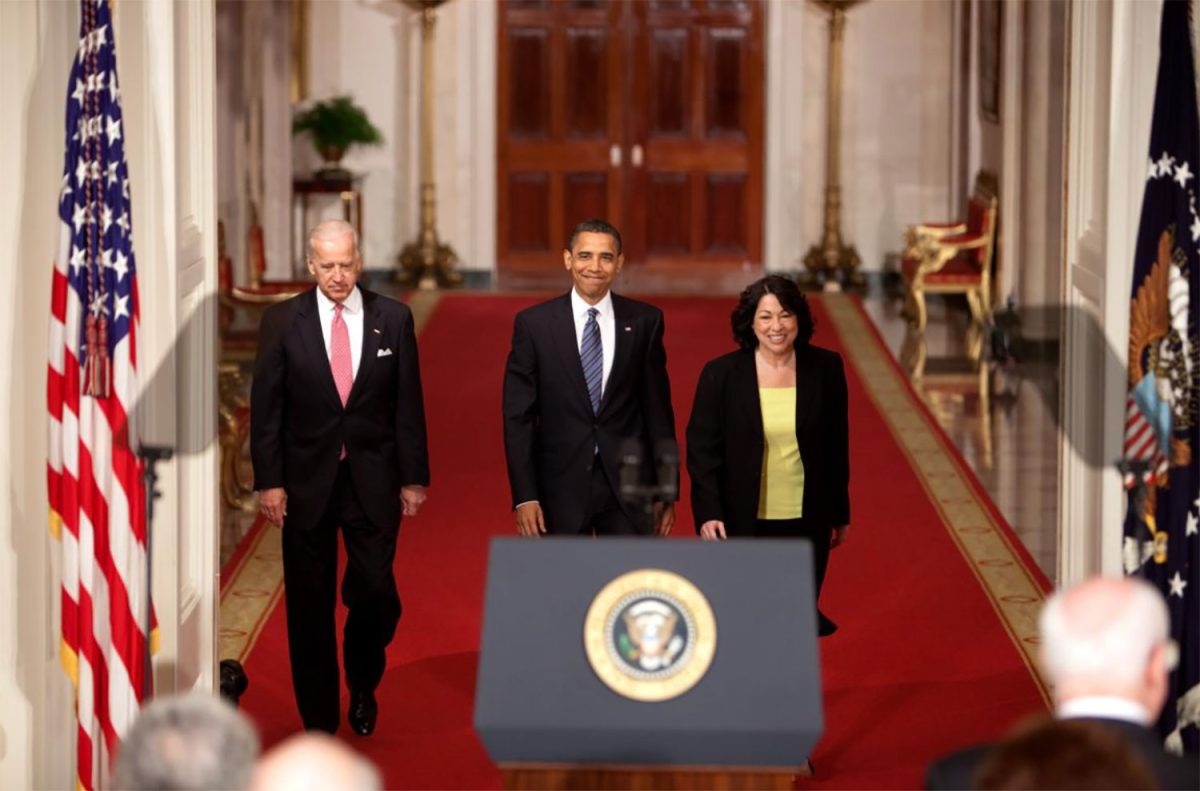If you love baseball and are looking to learn more about Hispanic athletes, read this article! In this article, I will be talking about Roberto Clemente, one of the best outfielders in the game.
Roberto Clemente was born in Carolina, located in the northeast part of Puerto Rico. Clemente was the youngest child out of seven siblings and grew up in a proud but humble family. His father was a foreman who helped deliver sand and gravel for a construction company. His mother was in charge of a grocery store and did other jobs involved with sugarcane plantation.
Growing up, Clemente played baseball and did track and field, where he won medals for the javelin throw and short distance races. Some even thought he was Olympic worthy in track and field until he turned his attention to baseball.
Clemente started his professional baseball career at the age of 18 when he was accepted a contract from Pedrín Zorilla with Cangrejeros de Santurce, a winter league team of the Puerto Rican Professional Baseball League.
In the Rule 5 draft, Clemente was signed by the Pittsburgh Pirates for $4,000. On April 17th, 1955, Clemente made his Major League Baseball debut batting third and playing right field for the Pirates in the first game of a doubleheader against the Dodgers.
Clemente finished his rookie season with 121 hits and five home runs along with a .255 batting average.
Clemente spent his whole career with the Pittsburgh Pirates, earning multiple awards and honors. He is still just one of 33 players in MLB history to achieve 3,000 hits.
His last game was October 11, 1972, at Cincinnati’s Riverfront Stadium in the fifth and final game of the 1972 NLCS, won by the Reds in the bottom of the 9th inning. Clemente had his final hit in the 1st inning, and his final plate appearance was an intentional walk in the 8th inning.
After Clemente retired from the sport in 1972, he returned to baseball in a different way– as the manager of the Senators of San Juan.
Clemente died December 31, 1972, in a plane crash he had booked to take emergency goods for the survivors of a huge earthquake in Nicaragua. He was survived by his wife and three children.
To this day, people still know who Roberto Clemente is and still value his contribution to baseball and his culture.
Audrey Barrit ‘28 said, “He opened the doors, and he was an advocate for more Latin American and Hispanic baseball players to become MLB players.” This is an example of how he shows the Hispanics and minority groups that it is possible to achieve your dreams if you strive and work hard for your goals.

In 2003, President George W. Bush, posthumously conferred the Presidential Medal of Freedom on Roberto Clemente. The press release from the White House said the following: “Roberto Clemente Walker was a superb professional athlete and a true humanitarian. On the baseball field, he had a Hall of Fame career as one of the game’s greatest right fielders. On and off the field, he was a model of kindness, generosity, and grace. Throughout his life, he demonstrated an abiding dedication to helping those in need. In his last act of devotion, Roberto Clemente Walker lost his life while seeking to serve others. The United States honors him for his athletic achievements and his compassionate heart.”
Alisha Covarrubias ‘27 said, “He worked really hard and deserves every [award] he got.”
In 1973, Major League Baseball changed the name of the Commissioner’s Award to the Roberto Clemente Award. Considered baseball’s most prestigious individual honor for Major Leaguers, this award is given to “the MLB player who best represents the game through extraordinary character, community involvement, philanthropy and positive contributions, both on and off the field.” (MLB.com) Each club nominates a player in September, and the winner is selected from 30 nominees during the World Series.
Roberto Clemente is worthy of being remembered and honored because of his impact on baseball and all the Hispanic athletes who came after him, and for his selfless desire to help those in need.





